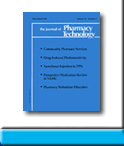 |
 |
G-CSF AND ERYTHROPOIETIN
STABILITY IN AMNIOTIC FLUID DURING SIMULATED IN VITRO DIGESTION
CONDITIONS
Darlene A Calhoun, Brooke E Richards, Jason
A Gersting, Sandra E Sullivan, and Robert D Christensen
To request full article click here.
OBJECTIVE: To determine the stability of granulocyte colony-stimulating factor (G-CSF) and erythropoietin (Epo) in human amniotic fluid and recombinant G-CSF (Neupogen) and Epo (Epogen) in simulated amniotic fluid to digestions at pH concentrations of 3.2, 4.5, and 5.8 to assess their bioavailability to the neonate.
DESIGN: A simulated amniotic fluid containing Neupogen and Epogen was subjected to in vitro conditions that mimicked preprandial and postprandial neonatal intestinal digestion. Human amniotic fluid was tested using identical digestion conditions as well as human amniotic fluid to which Epogen and Neupogen had been added.
MAIN OUTCOME MEASURES: The percentages of G-CSF/Epo and Neupogen/Epogen remaining after 1 and 2 hours of simulated digestions were compared with those at time zero, and concentrations at 2 hours were compared with those at 1 hour and time zero.
RESULTS: In simulated amniotic fluid at pH 3.2, significant degradation of G-CSF was observed at 1 hour (p = 0.03). No differences were observed at 1 or 2 hours for either pH 4.5 (p = 0.30 and 0.11, respectively) or pH 5.8 (p = 0.20 and 0.49, respectively). Human amniotic fluid exhibited significant degradation pH 3.2 (p = 0.04) and pH 4.5 (p < 0.05) at 1 hour; no difference was noted at pH 5.8 at 1 hour (p = 0.34). When additional Neupogen was added to human amniotic fluid, significant degradation was observed at pH 3.2 (p < 0.05) and pH 4.5 (p = 0.03) at 1 hour; no difference was noted at 1 hour at pH 5.8 (p = 0.11). In simulated amniotic fluid at pH 3.2, significant degradation of Epo occurred at 1 hour (p < 0.05). There were no differences at 1 hour for pH 4.5 (p = 0.50) or pH 5.8 (p = 0.17). Human amniotic fluid exhibited significant degradation at pH 3.2 (p < 0.05) and pH 4.5 (p < 0.05) at 1 hour; no difference was noted at 1 hour at pH 5.8 (p = 0.34). When additional Epogen was added to human amniotic fluid, significant degradation was observed at pH 3.2 (p = 0.001) and pH 4.5 (p = 0.003); no difference was noted at 1 hour at pH 5.8 (p = 0.31).
CONCLUSIONS: G-CSF/Epo in human amniotic fluid and Neupogen/Epogen in simulated amniotic fluid are preserved to varying degrees during simulated digestion conditions. The degree of degradation of both cytokines was time- and pH-dependent. Measurable quantities of G-CSF and Epo are biologically available when swallowed by the fetus or a preterm neonate.
J Pharm Technol 2002;18:310-5.
To request full article click here.
|
|
|
||
|

